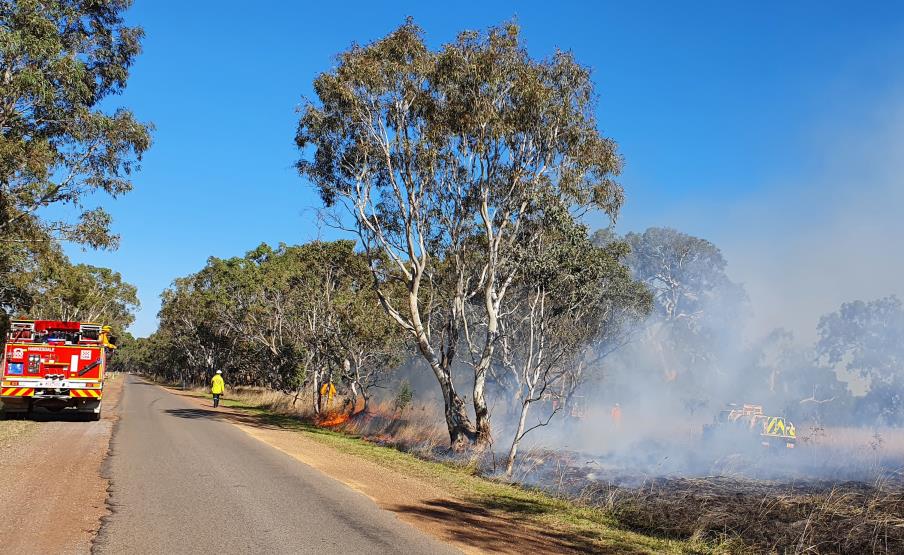
CFA’s Planned Burn Task Force, Forest Fire Management Victoria and Parks Victoria came together to conduct complex planned burns for the Southern Grampians Shire Council around the town of Dunkeld in earlier this month.
More than 100 hectares were burnt along Blackwood-Dunkeld Road and Old Ararat Road, including burns among heritage protected redgum trees and endangered wildlife.
The Planned Burn Task Force consisted of 18 volunteers from Mornington Peninsular, Central Victoria, Melton and Colac with supporting trucks from Hawkesdale, Bochara, Wootong Vale, Coleraine, Torquay, Aireys Inlet and Corangamite.
These crews assisted South West Region vegetation management officers (VMOs) to conduct the planned burns, focusing on fine dry fuels.
Experienced Burn Controller Mike Evans said the methods used closely mimicked the techniques of traditional landowners, where cooler burns were used to protect and regenerate native vegetation and allow wildlife the opportunity to seek protection before being impacted by fire.
“Southern Grampians Shire recognised that putting fire into the landscape provided more than just protection to the community,” Mike said.
“Using these techniques controls the introduced grasses and allows native vegetation to regenerate which is typically more fire resistant.
“As the native vegetation regenerates, we often see orchids and other wildflowers come back which attracts eco-tourism and brings people into the area. It can be a real boom for the local economy.”
District 5 VMO Philip O’Keefe said the burn was more complex because of the mature heritage trees that are well regarded by the local community and need to be protected from fire. Some of these trees are estimated to be older than 600 to 700 years. Planning for these burns was very detailed.
“The planning and preparation for these burns took about 12 months and involved local group officers and captains, service delivery coordinators, VMOs and many others,” Philip said.
“Everyone worked really well together and the burns went as planned despite some cooler challenging weather conditions. The volunteers from the Planned Burn Task Force were essential to getting this important work done and we owe them a big thanks along with the brigades that provided appliances.”
The Planned Burn Task Force has been an integral part of the success in the South West Region with about 150 volunteers participating in more than 15 burns. This has made a significant impact on the safety of communities and supported local brigades.
“The Planned Burn Task Force volunteers are often deployed for several days at a time, reinforcing the amazing commitment that is behind the South West Region Planned Burn Program “
South West Region has conducted more than 2500 hectares of planned burns this season across more than 70 sites from Hamilton in the west to Colac in the east in support of local councils and other land owners.
| Submitted by |
Paul McCallum |